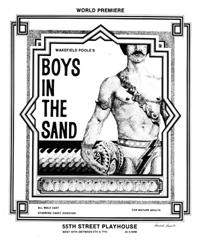
Pornographic films (pornos), erotic films, sex films, 18+ films, or also known as blue movie or blue film are films that present sexually explicit subject matter in order to arouse, fascinate, or satisfy the viewer. Pornographic films present sexual fantasies and usually include erotically stimulating material such as nudity (softcore) and sexual intercourse (hardcore). A distinction is sometimes made between "erotic" and "pornographic" films on the basis that the latter category contains more explicit sexuality, and focuses more on arousal than storytelling; the distinction is highly subjective.

The Opening of Misty Beethoven is an American pornographic comedy film released in 1976. It was produced with a relatively high budget and filmed on elaborate locations in Paris, New York City and Rome with a musical score, and owes much to its director Radley Metzger. According to author Toni Bentley, The Opening of Misty Beethoven is considered the "crown jewel" of the Golden Age of Porn (1969–1984).

John Calvin Culver, better known under his stage name Casey Donovan, was an American male pornographic film actor from the late 1960s until the mid-1980s, appearing primarily in adult films and videos catering to gay male audiences, during the Golden Age of Porn. Following a brief career as a Latin teacher and a stint as a highly-paid male model, Donovan appeared in Boys in the Sand (1971), the film that would cement his status as a gay icon. Attempts to build on his notoriety to achieve mainstream crossover success failed, but Donovan continued to be a bankable star in the adult industry for the next 15 years. He was briefly a mainstream actor, who appeared on stage, as well as a theatre producer and manager, and appeared as himself in TV series Emerald City.
Kip Noll, also Kip Knoll, is an American gay pornographic film actor-magazine model, active in the 1970s and 1980s.
Walter Wakefield Poole III was an American dancer, choreographer, theatrical director, and pioneering film director in the gay pornography industry during the 1970s and 1980s.
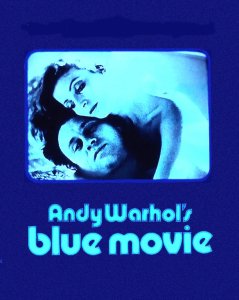
Blue Movie is a 1969 American erotic film written, produced and directed by Andy Warhol. It is the first adult erotic film depicting explicit sex to receive wide theatrical release in the United States, and is regarded as a seminal film in the Golden Age of Porn. It helped inaugurate the "porno chic" phenomenon, in which porn was publicly discussed by celebrities and taken seriously by film critics, in modern American culture, and later, in many other countries throughout the world. According to Warhol, Blue Movie was a major influence in the making of Last Tango in Paris, an internationally controversial erotic drama film starring Marlon Brando and released a few years after Blue Movie was made. Viva and Louis Waldon, playing themselves, starred in Blue Movie.

The term "Golden Age of Porn", or "porno chic", refers to a 15-year period (1969–1984) in commercial American pornography, in which sexually explicit films experienced positive attention from mainstream cinemas, movie critics, and the general public. This American period, which had subsequently spread internationally, and that began before the legalization of pornography in Denmark on July 1, 1969, started on June 12, 1969, with the theatrical release of the film Blue Movie directed by Andy Warhol, and, somewhat later, with the release of the 1970 film Mona produced by Bill Osco. These films were the first adult erotic films depicting explicit sex to receive wide theatrical release in the United States. Both influenced the making of films such as 1972's Deep Throat starring Linda Lovelace and directed by Gerard Damiano, Behind the Green Door starring Marilyn Chambers and directed by the Mitchell brothers, 1973's The Devil in Miss Jones also by Damiano, and 1976's The Opening of Misty Beethoven by Radley Metzger. According to Warhol, Blue Movie was a major influence in the making of Last Tango in Paris, an internationally controversial erotic drama film, starring Marlon Brando, and released a few years after Blue Movie was shown in theaters.
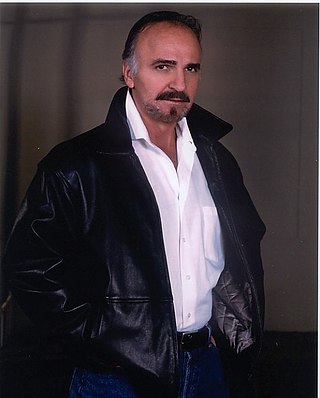
Paul Barresi is an American pornographic actor, pornographic film director, and media personality.

Gay pornography is the representation of sexual activity between males. Its primary goal is sexual arousal in its audience. Softcore gay pornography also exists; which at one time constituted the genre, and may be produced as beefcake pornography directed toward heterosexual female, homosexual male and bisexual audiences of any gender.
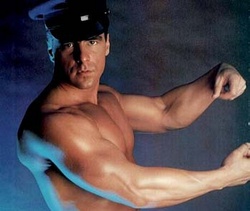
Jon Vincent was an American pornographic actor who appeared in gay and bisexual pornography.
CockyBoys is a New York City-based producer of gay internet pornography. Managed by CEO Jake Jaxson and his two partners, RJ Sebastian and Benny Morecock, the site has drawn attention from both inside and outside the adult industry for blending arthouse erotica and experimental film with mainstream-style genre films. The 2012 reality television feature film Project GoGo Boy is considered the studio's breakout hit.

Kurt Marshall was a model and an actor who performed in gay pornographic films in the mid-1980s. Although he appeared in only four films, the gay pornographic industry trade publication Unzipped named him one of the top 100 gay porn stars of all time in 2006, author Leigh Rutledge listed him as the ninth most influential gay porn star of all time in 2000, and adult film magazine editor John Erich called him one of the "most beautiful" gay adult film stars of the 1980s.

Sex in film, the presentation of aspects of sexuality in film, specially human sexuality, has been controversial since the development of the medium. Films which display or suggest sexual behavior have been criticized by religious groups or have been banned or censored by governments, although attitudes have changed much along the years and a more permissive social environment has developed in certain parts of the world, notably in Europe, North America, Australia and New Zealand. In countries with a film rating system, films which contain explicit sex scenes typically receive a restricted classification. Nudity in film may be regarded as sexual or as non-sexual.
George Payne is an American actor and retired pornographic film actor. He found early success as a swimsuit model and was featured in Physique Pictorial. Payne began work in the adult film industry in The Back Row in 1973 opposite actor Casey Donovan. He was featured on the cover of the LGBT magazine The Advocate the same year. He later starred with Jack Wrangler in Navy Blue in 1979, and in Centurians of Rome in 1981. Payne later transitioned to straight roles in the adult industry; his work is considered part of the Golden Age of Porn. He was inducted into the X-Rated Critics Organization Hall of Fame in 1999.

The 55th Street Playhouse—periodically referred to as the 55th Street Cinema and Europa Theatre—was a 253-seat movie house at 154 West 55th Street, Midtown Manhattan, New York City, that opened on May 20, 1927. Many classic art and foreign-language films, including those by Jean Cocteau, Sergei Eisenstein, Federico Fellini, Abel Gance, Fritz Lang, and Orson Welles, were featured at the theater. Later, Andy Warhol presented many of his notable films in this building in the late 1960s. Other notable films were also shown at the theater, including Boys in the Sand (1971) and Him (1974).
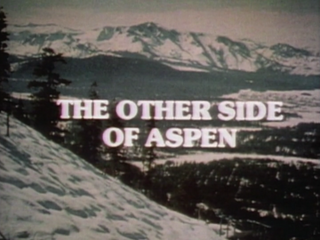
The Other Side of Aspen is a 1978 American gay pornographic film produced by Falcon Studios, directed by Matt Sterling, starring Casey Donovan, Al Parker, and Dick Fisk. The film consists of sex scenes filmed in Lake Tahoe, California, interspersed with dialogue scenes shot in San Francisco. The Other Side of Aspen was Falcon's first feature-length release, notable as one of the first adult films distributed on videocassette.

Wakefield Poole's Bible is an 1973 American softcore pornographic anthology film written and directed by Wakefield Poole. The film presents the biblical stories of Adam and Eve, David and Bathsheba, and Samson and Delilah in the form of pornographic vignettes, and stars Bo White, Caprice Couselle, Georgina Spelvin, Nicholas Flammel, Brahm van Zetten, and Gloria Grant. It is the only straight pornographic film to be directed by Poole, who was primarily a director of gay pornography.
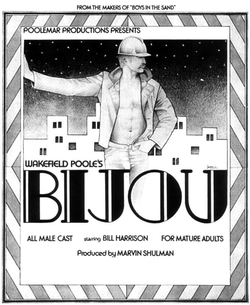
Bijou is an 1972 American gay pornographic film directed and edited by Wakefield Poole and starring Bill Harrison as a construction worker who witnesses a car accident and discovers an invitation to a club called Bijou in the purse of the victim.
Hand in Hand Films was a New York-based gay pornographic film studio that was founded in the early 1970s, as the Golden Age of Porn took shape. The company released more than 40 titles. It became known for producing avant-garde sex films with high production values, strong narrative throughlines and scenes that often pushed the boundaries of sexuality captured on film.
